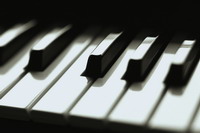Piano Sheets > Beatles - The Sheet Music > For No One (ver. 1) Piano Sheet
For No One (ver. 1) by Beatles - The - Piano Sheets and Free Sheet Music

About the Song
"For No One" is a song written by Paul McCartney (credited to Lennon/McCartney) that originally appeared on The Beatles' seventh album, Revolver. A ballad about the end of a relationship, it was one of McCartney's most mature and poignant works to date. Musically the track is particularly distinguished by its French horn solo.
John Lennon said of the song, "One of my favourites of hisa nice piece of work." The Beatles were a pop and rock group from Liverpool; England formed in 1960. Primarily consisting of John Lennon (rhythm gtr; vocals); Paul McCartney (bass gtr; vocals); George Harrison (lead gtr; vocals) and Ringo Starr (drums; vocals) throughout their career; The Beatles are recognised for leading the mid-1960s musical -British Invasion- into the United States.Although their initial musical style was rooted in 1950s rock and roll and homegrown skiffle; the group explored genres ranging.
Download this sheet!
About the Artist

Random article
All you need to know about free sheet music The Internet has made it possible for piano enthusiasts to learn how to play piano by using free sheet music available online. There are plenty of websites online, which offer you music notes for playing the piano.
Types of formats
There are various formats available when it comes to online music sheets for the piano. These include GIF, Postscript, finale, graphics interchange, adobe acrobat etc. If you want quick and easy access to sheet music piano then these free websites are the best choice available. Most websites will also have listings based on the genre of music to help you easily select the appropriate category of piano notes.
(More...)
